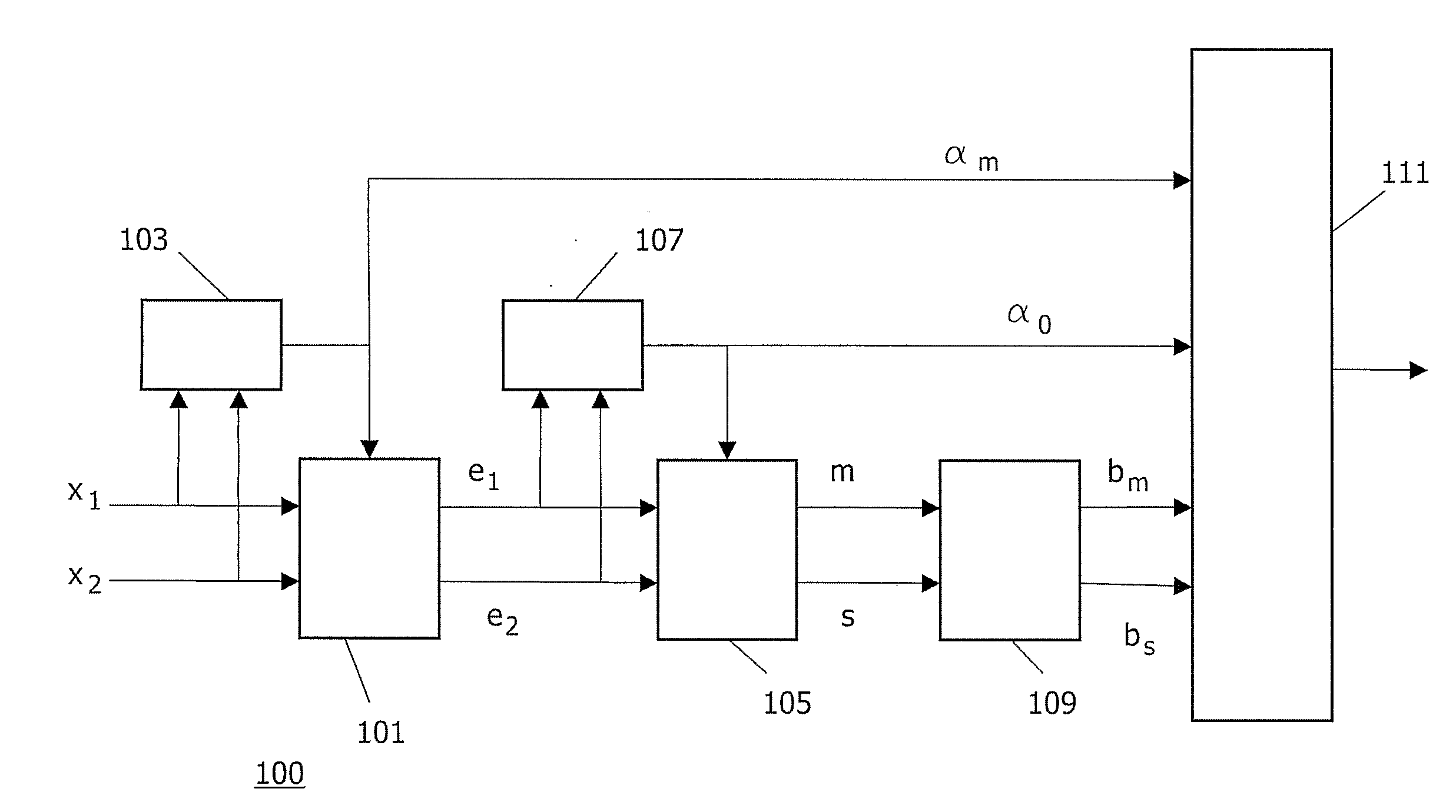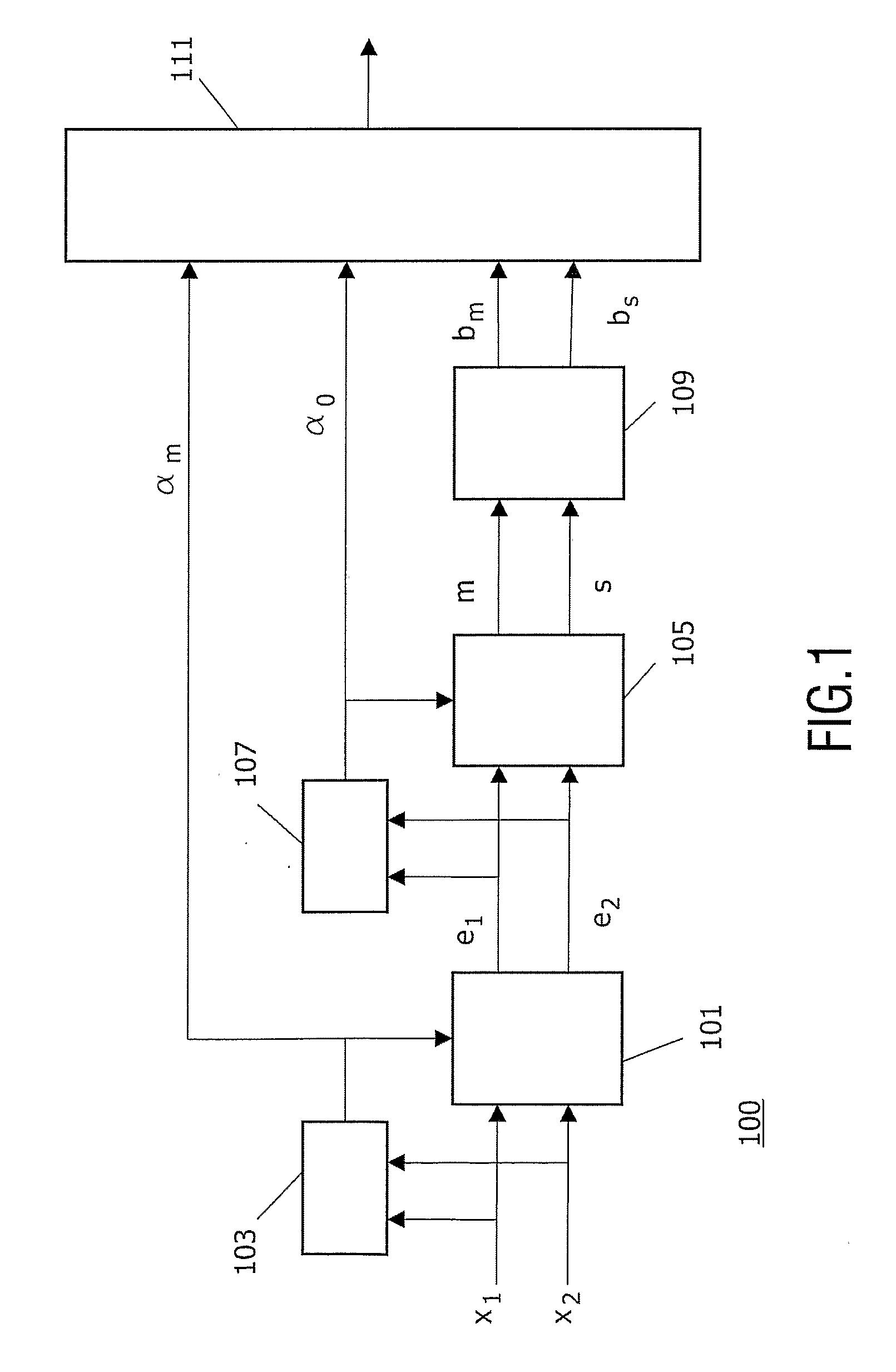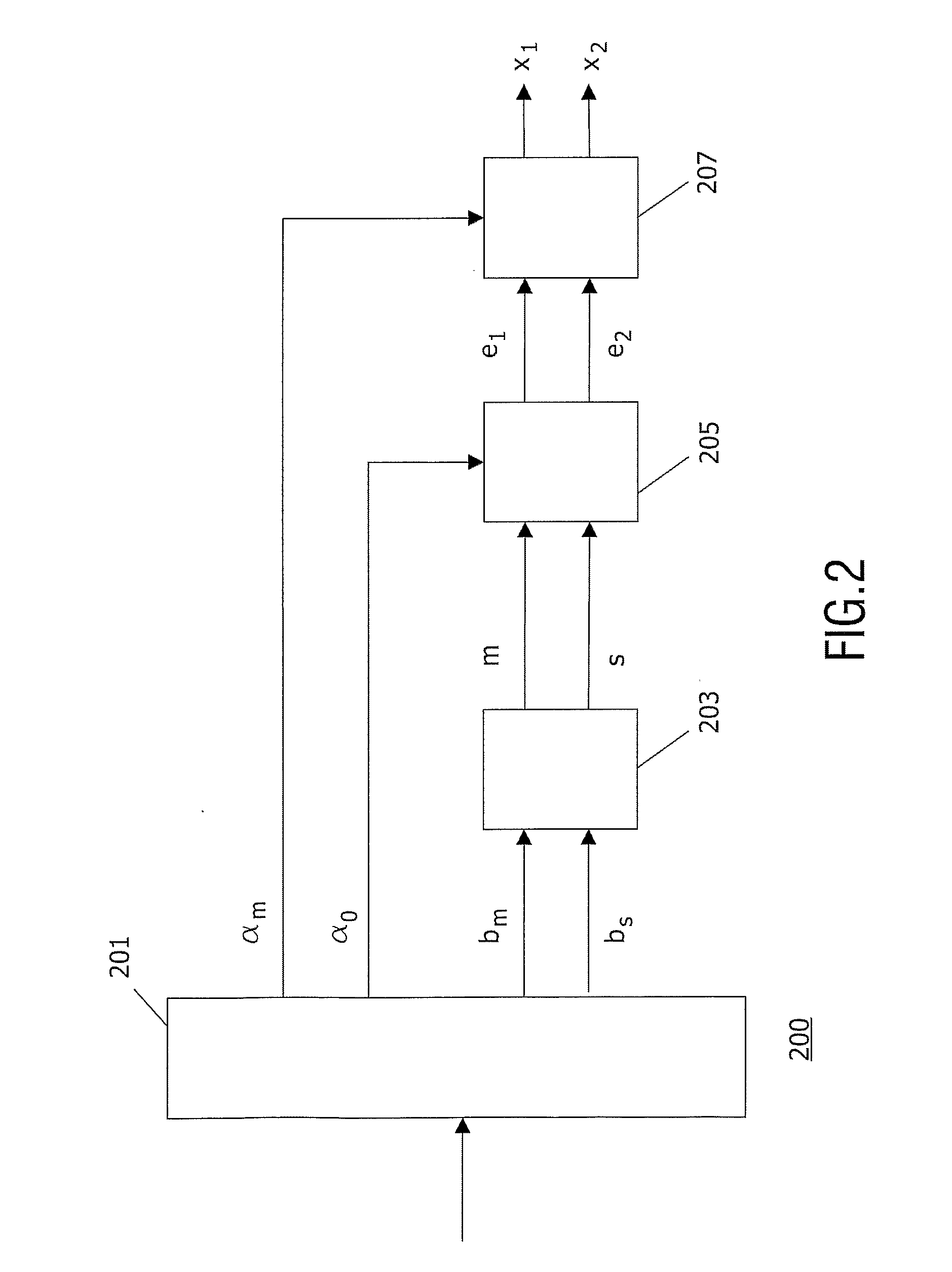Method and Apparatus to Encode and Decode Multi-Channel Audio Signals
a multi-channel audio and encoder technology, applied in the field of multi-signal encoders and multi-signal encoders, can solve the problems that the encoder cannot reproduce the time- or phase channel differences that are present in the original audio material, the encoding cannot preserve the correlation between the audio channels, and the quality degradation of the stereo signal generated by the encoder cannot be avoided. achieve the effect of reducing one, alleviating one, and eliminating on
- Summary
- Abstract
- Description
- Claims
- Application Information
AI Technical Summary
Benefits of technology
Problems solved by technology
Method used
Image
Examples
Embodiment Construction
[0055] The following description focuses on an embodiment of the invention applicable to an encoder and a decoder for a stereo audio signal. However, it will be appreciated that the invention is not limited to this application but may be applied to many other multi-channel signals.
[0056]FIG. 1 illustrates an example of a block diagram for an encoder 100 in accordance with an embodiment of the invention.
[0057] The encoder 100 receives a stereo signal comprising a first signal component x1 which in the described embodiment is the left channel signal and a second signal component x2 which in the described embodiment is the right channel signal. The first and second signal components x1, x2 are fed to a prediction processor 101 which generates a first residual signal e1 of the first signal component and a second residual signal e2 of the second signal component by linear prediction of the first and second signal components x1, x2.
[0058] The first and second signal components x1, x2 a...
PUM
 Login to View More
Login to View More Abstract
Description
Claims
Application Information
 Login to View More
Login to View More - R&D
- Intellectual Property
- Life Sciences
- Materials
- Tech Scout
- Unparalleled Data Quality
- Higher Quality Content
- 60% Fewer Hallucinations
Browse by: Latest US Patents, China's latest patents, Technical Efficacy Thesaurus, Application Domain, Technology Topic, Popular Technical Reports.
© 2025 PatSnap. All rights reserved.Legal|Privacy policy|Modern Slavery Act Transparency Statement|Sitemap|About US| Contact US: help@patsnap.com



